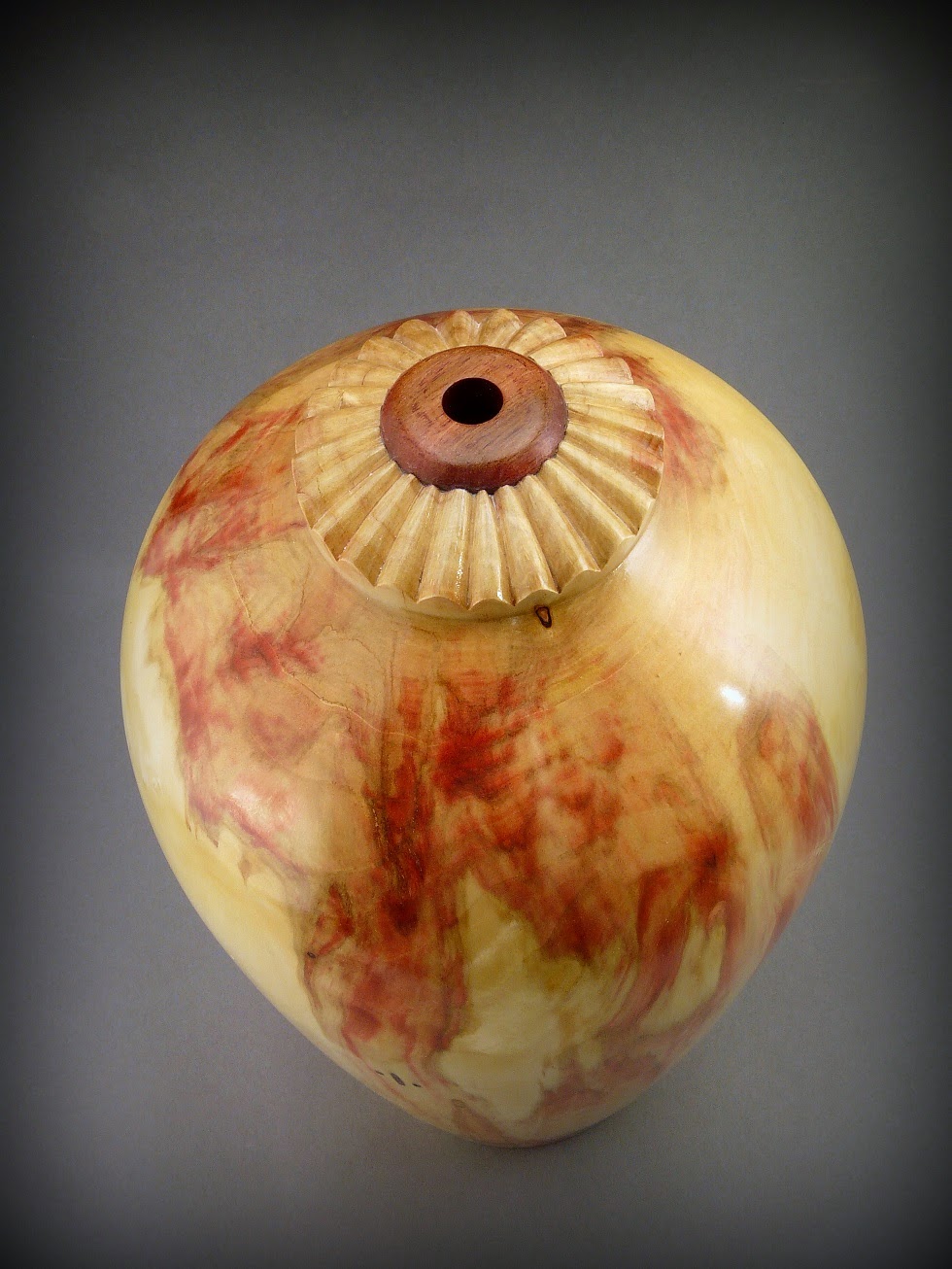 |
| End-grain view of Boxelder log |
It didn't take long to make the 20-mile drive to retrieve a small truckload of the prized wood. And it looked promising, judging by the pattern of red on its end grain.
Since the color pattern radiated outward from the center of the log, my thought was that this wood begged to be turned into vase-shaped hollow vessels, where the coral streaks would splash down the sides of the vessels from the top. So no time was wasted getting some of the log sections spinning on the lathe. Like a high-speed potato peeling session, soggy strips of boxelder were flying across the shop in a continuous arc, ending in a knee-deep heap on the floor as several vessels were shaped.
As the outermost white wood was stripped away from each log chunk during the rough shaping, brilliant vermilion layers quickly emerged from within. If you're the one manipulating the gouge, that brings your pulse up a notch or two.
Because the wood was still soaking wet (literally), it threw off a shower of water as it spun on the lathe. This session was all about getting the vessels rough-shaped to remove as much unwanted wood as possible. The outside shape was formed, then the inside was hollowed out. The walls of the vessels would have to be left thicker than the desired final dimension, and the pieces set aside to dry out for weeks. During that drying, the wood shrinks and distorts. Once dry, each vessel is remounted on the lathe, and made "true" (ie, round) again; the thickness is reduced to final size, and the vessels can be completed.
At this point, three such vases are done. The first one (HF67) sports a collar of red-dyed holly, and is 5 inches in diameter, 61/4 inches tall.
 |
| First completed vessel (HF67) |
 |
| 5 x 6-1/4 inches |
The second is similar, but has a darker red collar of Bloodwood, and has bolder, deeper streaks of cinnabar red:
 |
| Second vessel (HF68) |
 |
| 5 x 6-1/2 inches |
The third vessel is taller, 113/4 inches, with 24 carved flutes around a Bloodwood collar ring:
 |
| Third vessel (HF69) |
 |
| 6-1/4 x 11-3/4 inches |
These vessels are all finished with a silk-smooth, semi-gloss lustre, and are available at Bowlwood. There are more in the works.
We may sometimes curse the insect world for their unstoppable activities, but in the case of Ambrosia beetles, I feel like cheering them on!
__________________________________________________
4/21/14 Update:
Another vessel completed. This one sports some curly figure that shimmers in the light (a characteristic known as "chatoyance"). It is 51/2 in diameter, 81/4 inches tall.



No comments:
Post a Comment
Comments are moderated and may not be posted immediately.